Long ago, there reigned a mighty king named Ila. Once while hunting, he came upon a grove where Shiva was making love with Parvati, and surprise of surprises, Shiva had taken the form of a woman to please her. Everything in the woods, even the trees had become female, and as he approached even King Ila himself was transformed into a woman! Shiva laughed out aloud and told him to ask for any boon except that of masculinity.
Thus says the Shaktisangama Tantra:
Woman is the creator of the universe,
the universe is her form;
woman is the foundation of the world,
she is the true form of the body.
the universe is her form;
woman is the foundation of the world,
she is the true form of the body.
In woman is the form of all things,
of all that lives and moves in the world.
There is no jewel rarer than woman,
no condition superior to that of a woman.
of all that lives and moves in the world.
There is no jewel rarer than woman,
no condition superior to that of a woman.
No wonder even the most powerful of gods, like Shiva above, crave to enter the feminine form, hoping to acquire at least some of her glorious power.
According to the Devi-Mahatmya:
By you this universe is borne,
By you this world is created,
O Devi, by you it is protected.
By you this world is created,
O Devi, by you it is protected.
The earliest term applied to the divine feminine, which still retains its popular usage, is Shakti. The word Shakti is used in a bewildering variety of ways ranging from its use as a way of signifying the ultimate primordial creative power, to expressing the capacity or power of words to convey meaning. Etymologically it is derived from the root 'shak,' meaning potency or the potential to produce, an assertion of Her inherent creative aptitude.
All interpretations of the word 'shakti' hold common one parameter, namely power. Specifically, Shakti means power, force and feminine energy. She represents the fundamental creative instinct underlying the cosmos, and is the energizing force of all divinity, of every being and every thing. Devotees believe the whole universe to be a manifestation of Shakti, who is also known by her general name Devi, from the Sanskrit root 'div' which means to shine.
This feminine power has been given expression in a multitude of female figures as also in abstract representations, both in sculpture and painting.
Primarily, Shakti is depicted in art as one of the following icons:
1). The Yoni (Female Generative Organ)
2). An Independent Goddess
3). The Goddess and God Together as a Couple
2). An Independent Goddess
3). The Goddess and God Together as a Couple
The Yoni
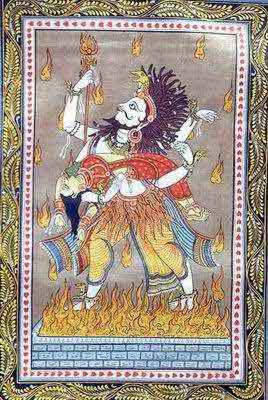 In a tragic turn of events, Sati, the wife of Shiva ended her life by jumping into flames. She had felt slighted at the insufficient honor accorded to her husband at a ritual sacrifice performed by her father.
In a tragic turn of events, Sati, the wife of Shiva ended her life by jumping into flames. She had felt slighted at the insufficient honor accorded to her husband at a ritual sacrifice performed by her father.
Shiva became inconsolable following her death. He retrieved her charred body from the fires, carried her on his back, and wandered across the three worlds performing a mad dance of seething destruction.
Fearful that Shiva in his insatiable yearning may destroy the entire manifested existence, Vishnu in his role as the preserver of the world cut up Sati's body piece by piece to relieve Shiva's burden. Her body was divided into a total of fifty-one fragments. At each of the fifty-one spots where these pieces fell, a pilgrimage center (Shakti-pitha) came into existence.
The most important and significant of these sacred sites remains the place where fell Sati's organ of generation. This place is today identified as Kamakhya in Assam, and a temple was built on the hilltop to mark the spot. It contains no image of the goddess, but in the depths of the shrine there is a yoni (vulva) shaped cleft in the rock, adored as the one belonging to Sati herself. A natural spring within the cave keeps the cleft moist. During July-August after the first burst of the monsoon, a great ceremony called Ambuvachi takes place. At this time of the year, the water runs red with iron oxide, and the ritual drinking of this elixir is symbolic of partaking the menstrual fluid of the Devi.

In the branch of Tantra known as Shaktism, the menstrual taboo is broken down and the menstrual fluid is regarded as sacred and becomes the object of veneration. A menstruating woman is placed in a special category during ritual practice. Her energy at this time is said to be different in quality, and the rhythm that occurs in her body appears to be related in a mysterious way to the processes of nature. In the chakra-puja of the left-hand Tantriks, menstrual fluid may be taken as a ritual drink along with wine, and a special homage is paid to the yoni, touching it with one's lips and anointing it with sandalwood paste. During the whole proceeding, the participant continues to offer libation from a yoni-shaped ritual vessel called the kusi.
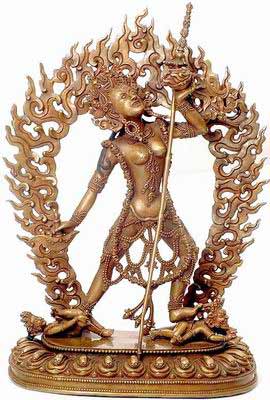 Both in physical appearance and metaphysically, the yoni is akin to the lotus flower. Both represent the perfection of beauty and symmetry. The yoni is likened to the lotus in the early stage of its opening and also in its fully open form. In addition, the lotus remains unaffected by the surface of the water where it rests, and its petals also are not soiled by the mud they spring from. Similarly, the yoni too remains perpetually pure and is not soiled by any action. The Tantric Buddhist Goddess Vajrayogini promises her approval and blessings to the man who worships her in this way:
Both in physical appearance and metaphysically, the yoni is akin to the lotus flower. Both represent the perfection of beauty and symmetry. The yoni is likened to the lotus in the early stage of its opening and also in its fully open form. In addition, the lotus remains unaffected by the surface of the water where it rests, and its petals also are not soiled by the mud they spring from. Similarly, the yoni too remains perpetually pure and is not soiled by any action. The Tantric Buddhist Goddess Vajrayogini promises her approval and blessings to the man who worships her in this way:
'Aho! I will bestow supreme success
On one who ritually worships my lotus,
which is the bearer of all bliss.'
On one who ritually worships my lotus,
which is the bearer of all bliss.'
The yoni or female generative organ is thus venerated for its obvious properties of fertility and growth. In addition it is believed to be the seat of concentrated energy (tejas) which gives rise to all creation. In fact the English word for yoni, 'vulva,' has a root meaning signifying a revolving or circular motion, and indeed in occultism the vulva is conceived of as a talismanic vortex, a whirling life force that concentrates a fiery essence.
The Independent Image of the Goddess
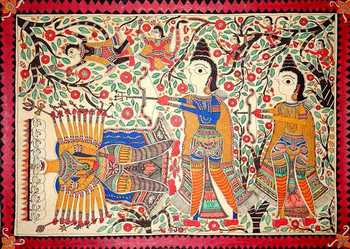 In the Ramayana when Rama the virtuous prince, set out to fight Ravana the mighty demon, he first invoked the goddess Durga. The villain was eventually killed on the final day of the gruesome battle, which lasted for ten days.
In the Ramayana when Rama the virtuous prince, set out to fight Ravana the mighty demon, he first invoked the goddess Durga. The villain was eventually killed on the final day of the gruesome battle, which lasted for ten days.
In a continuing, unbroken tradition, this occasion is still celebrated as Durga Puja. The festivities span nine days, culminating on the tenth day in one of the biggest festivals of India, namely Vijaya Dashmi, literally translated as the Tenth Day of Victory. Significantly, in many parts this is an occasion to celebrate military might and a symbolic worship of weapons is still common. What greater paean can be sung to the power and glory of the Goddess? It is the men who go out to war, but before doing so they must invoke Shakti, deified as the Goddess Durga.
The word Durga is made up of 'Dur,' which means difficult, and 'ga,' meaning go against. Thus Durga is the triumphant aspect of Shakti, which brooks no opposition.
In her iconographic representations too, Durga is invariably shown adorned with weapons, poised for battle.
In fact many of the narrative depictions represent her battling a hideous buffalo-demon, though, notwithstanding the essentially gruesome composition, the goddess herself is always shown of a pleasant and charming countenance, a picture of supreme beauty.
According to Shankaracharya:
Who art thou, O Fairest One! Auspicious One!
You whose hands hold both: delight and pain?
Both: the shade of death and the elixir of immortality,
Are thy grace, O Mother!
You whose hands hold both: delight and pain?
Both: the shade of death and the elixir of immortality,
Are thy grace, O Mother!
The goddess embodies within herself both the creative and destructive principles which are but one and the same. While Durga is the most potent icon to express the aggressive and destructive behavior of Shakti, Lakshmi is the quintessential goddess who proclaims her creative aspect. Without exception Lakshmi is depicted in art as full-breasted (symbolizing her powers of nourishment), and wide-hipped (signifying her fertile, child-bearing capabilities).
It is also for this reason that she is almost always shown in association with the lotus, which forms one of her most important iconographic attributes.
The image of the individual goddess stresses that her divine power is not dependent on her relation to a husband-god, rather that she bears her identity through her own right and might. An apt epithet of Shakti in this context is 'Svatantrya,' meaning independence or freedom, signifying that her existence does not depend on anything extraneous to herself.
The Goddess and the God
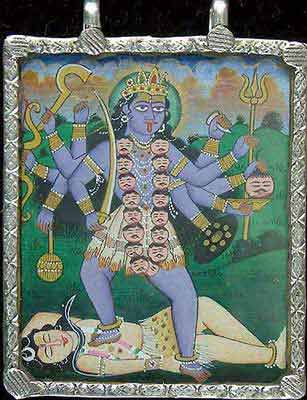 In many instances, the goddess is shown coupled with the god, as wife and husband. Like all goddess imagery this too has metaphorical import. Consider for example the most evocative of such depictions: the great goddess Kali dancing over the corpse of her husband Shiva.
In many instances, the goddess is shown coupled with the god, as wife and husband. Like all goddess imagery this too has metaphorical import. Consider for example the most evocative of such depictions: the great goddess Kali dancing over the corpse of her husband Shiva.
This is a statement of the superiority of feminine divinity, and indeed Shiva, addressing the goddess in an ancient text says: 'I, the Lord of all, am a corpse without you,' and Krishna confesses to Radha: 'Without you I am lifeless.' The intention here is not to portray the goddess as a slayer of men but as the power (Shakti) of Shiva, who without her is inert like a corpse.
The Shiva corpse may in fact be interpreted as representing the Tantric adept performing one of his yoga exercises, the 'shavasana,' or posture of the corpse,' in which the yogi lies on his back utterly relaxed in mind and body. All his energies are abandoned and symbolically externalized in the figure of the Shakti dancing above him. The purport being that detached from his feminine side, the yogi is incomplete and as good as dead. This belief is expressed in the words: 'shivah shakti vihinah shavah' 'Shiva deprived of Shakti is a corpse (shava).' This statement recurs in most of the Tantras in one form or another.
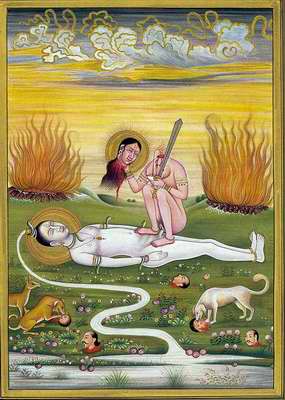 To regain his Shakti and return from his trance like state, the power of the goddess must repossess and complete him. This metaphysical process of union is depicted graphically through the act of sexual intercourse. But it is no regular act of making love. Here it is the woman who rides the male. In this inverted sexual position, the female straddles the male and is the prime mover and active power. This reverse act of lovemaking is known in Sanskrit as viparita-rati.
To regain his Shakti and return from his trance like state, the power of the goddess must repossess and complete him. This metaphysical process of union is depicted graphically through the act of sexual intercourse. But it is no regular act of making love. Here it is the woman who rides the male. In this inverted sexual position, the female straddles the male and is the prime mover and active power. This reverse act of lovemaking is known in Sanskrit as viparita-rati.
It signifies the feminine urge to create unity from duality and its constant aspiration to unite with the male principle. This is emphasized in the Gandharva Tantra where it is written that 'She who is the sun, moon, and fire, lays down the purusha (male) and enjoys him from above.' She (Shakti) is the active lover of a quiescent Shiva and her union with him is critical for him to be able to assert his divinity and powers. The very first verse of the Tantric text Saundaryalahari states: 'If Shiva is united with his Shakti he is able to exert his powers as a Lord; if not, the god has not even the strength to move.' Indeed, she is the potency that dwells in each of the male gods and the spark that arouses them to action.
In fact She is His Power. If we accept the ancient Hindu precept that divinity resides in each individual, we realize that Shakti is the inherent power that lies in each of us. This is independent of the gender of the individual in question.
Another popular image which shows the goddess as Shakti united with her god is the Shiva linga. This is a composite icon which shows a yoni and a linga (male generative organ), conjoined together.
Though it is commonly believed that the Shiva-linga shows the male organ penetrating the female, an actual physical appraisal points to a contrary direction.
The yoni forms a pedestal and the abstract geometrical shape of the urdhvalinga (erect phallus) rises out of the yoni (womb). The linga does not enter the yoni (as is popularly believed), rather it emerges from the yoni. According to scholar Stella Kramrisch, this fundamental relationship of linga and yoni has been obscured by patriarchal interpretations. Nevertheless, the ever-creative yoni does assert itself, for the goddess as Shakti is the essential creative matrix, underlying all that which exists.
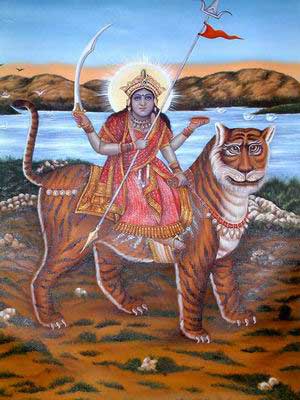
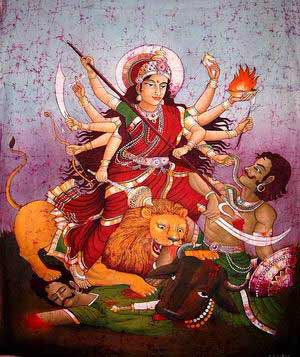
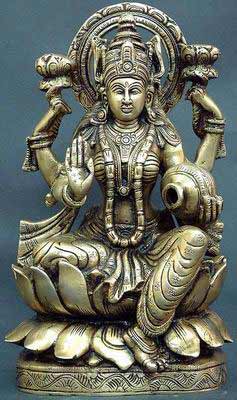
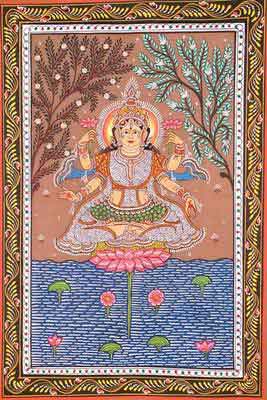
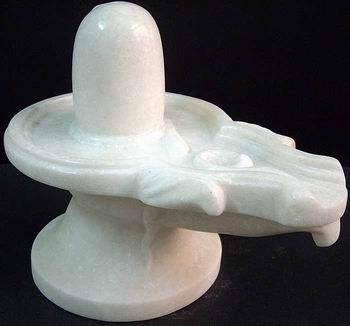
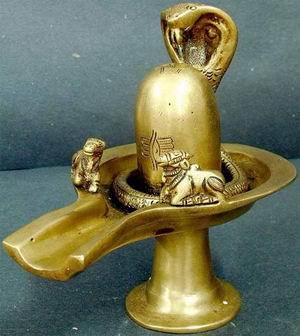
No comments:
Post a Comment